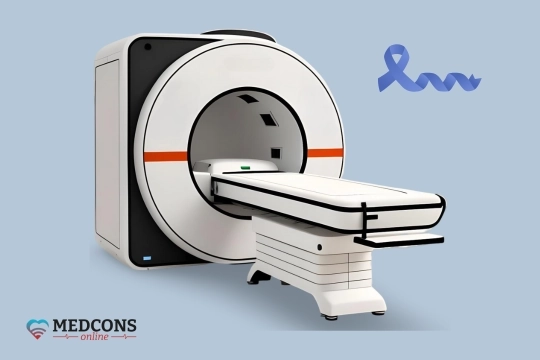
A study by Berlin scientists has convincingly shown that a negative multiparametric MRI of the prostate is reliable evidence of a very low risk of carcinoma development. If an experienced radiologist finds no signs of malignancy on such scans, regular follow-up can replace biopsy.
What is the difference between multiparametric and conventional MRI?
Multiparametric in this case refers to the fact that with high-resolution MR imaging the prostate gland is visualized in all planes and from multiple angles, and analyzed using different functional measurements.
The first step of the exam focuses on differentiating the tissue with altered structure from healthy tissue. The next step is to determine the features of the altered tissue using functional sequences (e.g. evaluating cell density and blood flow). A diffusion-weighted MRI sequence can determine whether cell density is increased in the area of pathological changes - as in the case of prostate carcinoma. Dynamic contrast-enhanced MRI sequences can delineate areas of prostate cancer with increased blood flow (intravenous contrast agent administration is therefore a component of MRI in multiparametric evaluation of prostatic tissue).
What motivated the scientists?
Prostate cancer is the second most common cancer and the fifth most common cause of death from malignant diseases among men. The suspicion of prostate carcinoma is detected every day in a huge number of patients all over the world, so doctors are faced with the task of developing not only the mostfunctional, but also the most cost-effective methods of diagnosing it. The standard way is the determination of prostate-specific antigen (PSA) level in serum and digital rectal exam. In the past, biopsy used to be the next step if the findings were suspicious.
The aim is to locate the index (most suspicious for malignancy) foci in order to biopsy them more precisely. Even before the Berlin study, there was already evidence that mpMRI was also a reliable method for refining the indications for biopsy. However, regular follow-up of patients with negative MRI results and patients with positive MRI results but negative biopsy results had not yet been performed.
How was the trial conducted?
593 patients (mean age 64 years) with suspected prostate cancer were examined by magnetic resonance imaging and followed up for 8 years. MRI scans were assessed by experienced expert radiologists.
The study was funded by the Berlin Cancer Society, the Berlin Radiology Society and the Berlin Urological Society.
A sample of prostate tissue was only taken if suspicious changes were visible on the scans. If not, regular urological examinations at 6-month intervals were performed instead of biopsy for 3 years. During each follow-up appointment, PSA was determined, as well as rectal exam and, if necessary, transrectal ultrasound at the discretion of the attending physician.
At initial examination, 48% (i.e. 286 participants) had negative (i.e. no evidence of malignancy) MRI findings. 91% of this group did not have a biopsy. Prostate carcinoma was found in 7 participants who underwent biopsy despite a negative MRI. A further 7 men with initially negative MRI developed malignancy during the study.
Of those who had a biopsy at baseline, 27% (161 people) were found to have cancer. After 3 years, this proportion had risen to 29 %.
According to the researchers, the predictive value of a negative MRI after 3 years was 96% (95% confidence interval). Despite the negative MRI results, 4.0 per cent of participants were still diagnosed with prostate cancer at follow-up.
Conclusions
It is clear that such individualized monitoring could save many men from having to undergo a prostate biopsy without reducing diagnostic accuracy with regard to individual cancer risk. The researchers therefore believe that the findings are an important step towards personalized treatment of prostate cancer. By using magnetic resonance imaging more effectively, patients will be able to get the right scope of diagnosis at the right time.
According to Dr Hamm, an important prerequisite for active surveillance of this type is the evaluation of MRI images by experienced radiologists with special training in interpreting this type of image using standardized imaging protocols.
The Berlin researchers hope that this study will serve as an impetus to further strengthen the importance of MRI as a means of deciding for or against biopsy in national clinical guidelines.
References
- Hamm CA, Asbach P, Pöhlmann A, et al. Oncological Safety of MRI-Informed Biopsy Decision-Making in Men With Suspected Prostate Cancer. JAMA Oncol. Published online December 12, 2024. doi:10.1001/jamaoncol.2024.5497
Comments — 0